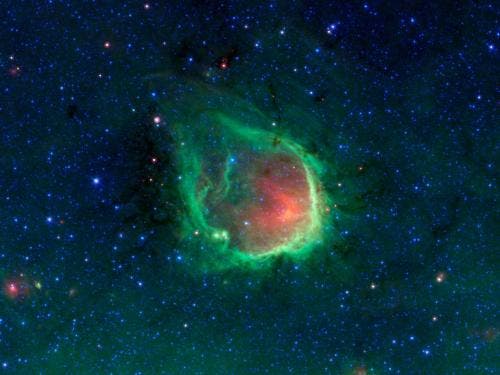
The brilliant image from above was captured by Spitzer space telescope and depicts a ring shaped region formed by hot gas and glowing dust.
Dubbed RCW 120, the nebula lies about 4,300 light-years away from Earth, and is located in the constellation Scorpius, just above the plane of the galaxy. The wavelength emited by the nebula is far within the infrared spectrum, which makes it totally invisible to a human observer, but perfectly bright for Spitzer’s infrared detectors.
It’s interesting “O-ring” shape, scientists believe, comes from the heat of a cluster of giant “O” type stars at the center of galaxy. These star are the most massive and bright stars so far known to man, which emit an intense ultraviolet light. But the captioned image example is only one of the slew of similar nebulas the Spitzer telescopes finds everyday.
So many, in fact, that the scientific team leading the Spitzer project are calling out “citizen scientists” to help identify and classify. As such, anyone interested in helping catalog findings such as these are invited to visit the Milky Way Project website.






